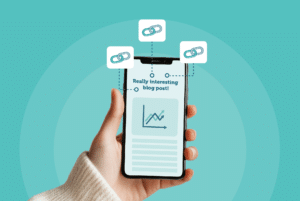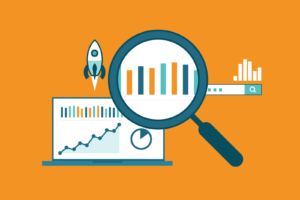
All good links need to be earned and there is a great difference between a content idea and a content idea that gets links, which means that coming up with just any idea isn’t enough to earn those all-important backlinks which help boost rankings.
Coming up with a link-worthy campaign idea has become an art form, yet whilst there are likely to be times when an idea comes to you quickly and everything falls into place (data, format and hook), there can also be times when you can feel a little stumped as to where to begin with ideation and developing a campaign idea.
Here are my three tips for coming up with an idea that journalists will want to feature, and most importantly, credit with a link. If you want to improve your link building, you might find they come in handy.
1. Finding a data source
One of the most important elements of your campaign is data. Data underpins your whole campaign and ensures that you not only have a well-rounded content idea, but that your idea has solid methodology too - something that gives you a much greater sell-in with journalists.
At Aira, data is one of the key components to getting an idea through our content validation process. Yet, knowing how integral this component is to an idea can often mean that data can feel a little intimidating when trying to come up with an idea.
Whilst there is no wrong or right way to ideate - you may come up with an idea first and look for the data afterwards - looking for any interesting and relevant datasets as your first step in ideation is a good place to start.
Make a resource of data sources that you can turn to when you need them and add these to a spreadsheet or bookmark folder so you easily have a list of sites to turn to. Sign up for newsletters on data sites you regularly use so that you can keep updated with new data releases when they come through. You can easily also view upcoming or recently released data on the ONS too.
Some of my favourites for data include:
- The World Bank
- OECD iLibrary
- Reddit datasets
- ONS
If you’ve made data your starting point, then stories from your dataset won’t always present themselves instantly, or you may only see the initial stories jump out at you. When you delve deeper into a dataset you can often find more unique data hooks that you can use to build out your campaign idea. The best way to play around with data is to get it into a spreadsheet so that you can easily sort through the data and filter by different categories.
Read More: The 2022 State of Link Building Report
2. Consider the right format
Choosing the right format and visual execution for your campaign is key to telling the story of your idea and allowing journalists to easily digest what it is it that you’re trying to show them and their readers. If your data isn’t presented clearly it’s all too easy for journalists to click off your campaign and onto the next.
Your format could be as simple as a table, it doesn’t always need to be a big shiny interactive campaign to earn links - some of our best performing campaigns at Aira have been static infographics. It’s also worth looking at tools such as Datawrapper, which allow you to input your data and play around with formats before you decide on which visual to brief your designer on.
Build up a portfolio of design references to look back on when you’re thinking of a visual for your ideas, this could include past client examples you can draw inspiration from as well as inspiration from other campaigns that you liked too.
Add all of your visual references on Pinterest so that you can refer back to these whenever you need them. You may want to start the ideation process with a cool format or campaign idea that has gained a lot of links (it’s always best to check on Buzzsumo or Majestic to see how well each campaign has performed) and think about how you could develop this concept for your client or theme.
A few of my favourite places to gather creative inspiration include:
- Content Curated - a monthly newsletter that rounds up the best content campaigns of the month
- The Pudding - a publication that combines data into visual essay form
- Financial Times Visual Vocabulary - a resource that looks at the best visual according to the data relationship you want to show
3. Build your hook
There is no right or wrong way to come up with a content idea, and beginning with research into topics within the client's industry, or those journalists are writing about, is one of the best and easiest ways to come up with the seed of an idea. One headline may spark off a train of thought or inspire you to delve deeper into a theme and you’ll also uncover the topics that have been covered time and time again - ideally, you want to leave those well-trodden topics alone and think about what you can add to make it new.
If you’ve started with research into a particular industry or niche then you’ll already have an understanding of the topics journalists are covering and if your idea is something that they’ll want to feature.
Whilst you may know that the topic is relevant to journalists and their readers, developing your hook is what makes your story unique and relevant to the audience. Making sure you have a unique hook doesn’t mean that your campaign needs to be groundbreaking, it just needs to have something new. It may be that you’re pulling something new from a report or dataset and showing a dataset in a new format or have found data within a wider report that hasn’t yet been featured.
If you only have your data and format boxes ticked you’re going to find link building for websites a long and laborious process without a strong media hook. Take a look at Shannon McGuirk’s blog post to learn how to build a digital PR newsroom for your content campaigns.
Follow these tips to help you build a well rounded content campaign for link building - and watch those links roll in.






